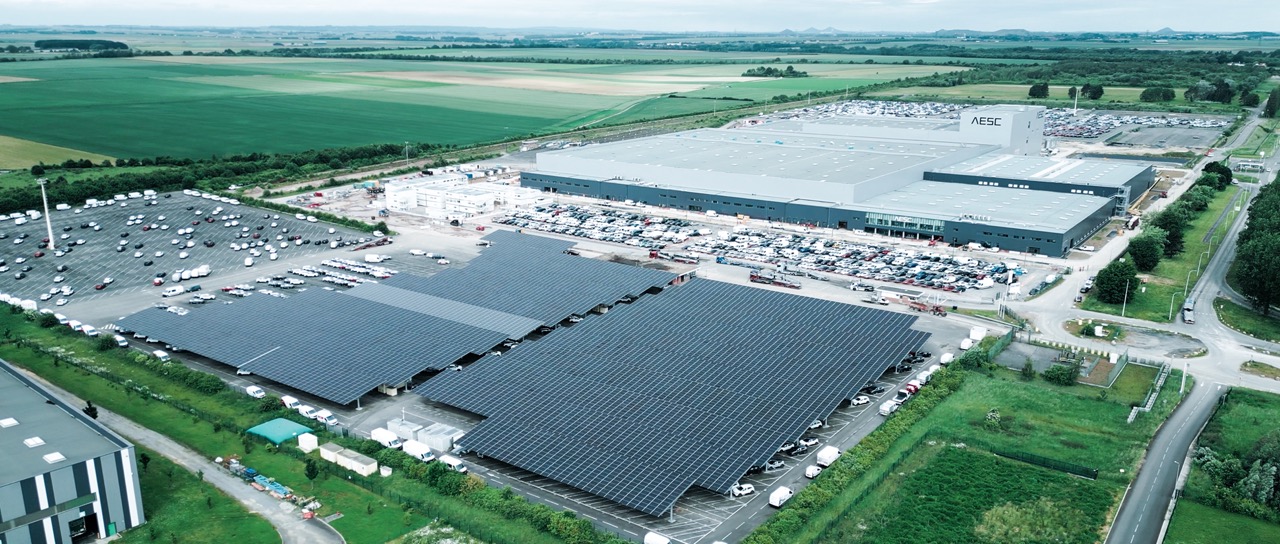In an online presentation SVOLT gave us more information about its NMx cobalt-free battery cell that’ll arrive next year.
This long cobalt-free battery cell from SVOLT is specially made to be used in battery packs assembled with the CTP (cell-to-pack) technology.
With the CTP technology instead of having battery cells inside modules, then modules inside battery packs, we remove modules altogether. We end up with long prismatic battery cells connected in series that are put in an array and then inserted into a battery pack, making it as simple as it can be.
Let’s see some details about the battery cell.
Specs
- Capacity: 226 Ah
- Gravimetric energy density: 240 Wh/kg
- Volumetric energy density: 590 Wh/L
- Chemistry: LNMO
- Dimensions: 575 x 21,5 x 118 mm
Update
Initially when I wrote this article I thought that these SVOLT battery cells were made in high-voltage spinel form, but I was wrong. If true these battery cells would have a nominal voltage around 4,7 V and could be charged at 5 V. It would be possible to assemble simpler battery packs with fewer cells. Only 80 cells in series would be needed to reach 400 V, or 160 cells in series to reach 800 V.

However, after calculating the nominal voltage it’s clear that the LNMO battery cell from SVOLT isn’t made in a high-voltage spinel form. It has a nominal voltage of 3,8 V and a maximum charge limit of 4,3-4,35 V.
Anyway, regarding cost and energy density, LNMO battery cells offer a good balance when compared to alternative technologies.
NCM 811
- Gravimetric energy density: 270-300 Wh/kg
- Volumetric energy density: 620-700 Wh/L
- Cost per kWh: 90-80 euros
LNMO
- Gravimetric energy density: 240 Wh/kg
- Volumetric energy density: 590 Wh/L
- Cost per kWh: 80-70 euros
LFMP (high voltage version of LFP)
- Gravimetric energy density: 200-225 Wh/kg
- Volumetric energy density: 490-530 Wh/L
- Cost per kWh: 70-60 euros

What about longevity?
In the early days, some electric cars used manganese-rich battery cells that were extremely safe but weren’t very robust. At higher temperatures the manganese in the cathode tended to be corroded by the liquid electrolyte, which gradually reduced the ability to store lithium ions. We all remember the mess of the first generation battery packs in the Nissan LEAF made with LMO cells and without a proper TMS…
Fortunately this corrosion problem with manganese-rich battery cells was later solved by modifying the electrolyte and the coating of the cathode’s surface. This was the “secret” behind the more robust 2015 Nissan LEAF’s lizard battery or the GS Yuasa LEV50N cells used by Mitsubishi i-MiEV.
Modern manganese-rich battery cells are not only extremely safe, but also durable.
However, the arrival of more energy-dense NCM battery cells made us forget manganese-rich batteries, until now…
Manganese-rich batteries are coming back
SVOLT says that its new LNMO battery can deliver a 880 km range and lasts for 15 years and 1.200.000 km, which represents 1.500 cycles before reaching the EoL (End-of-Life). Some researchers consider that the EoL is reached when a battery only retains 70 % of the initial capacity, while others consider 80 %.
Given that these figures are likely in the fairy tale NEDC standard, we should get around 660 km of range and 900.000 km of service life with the more realistic WLTP.
Moreover, if we assume that the EoL happens at 70 %, it means that after 900.000 km the battery will still be able to deliver a WLTP range of 462 km.
Regarding cathode development of LIB (Lithium-ion batteries) we are currently at phase 2 with nickel-rich NCM 811 and upcoming NCMA battery cells, where costs are reduced by replacing as much cobalt as possible with nickel.
The phase 3 starts when more and more nickel is replaced with manganese.
To understand why phase 3 is important, let’s see the average market price of these raw materials per ton.
- Cobalt: 27.000 EUR/t
- Nickel: 11.000 EUR/t
- Manganese: 2.000 EUR/t

Anyway, it’s great to soon have at least two compelling cobalt-free battery technologies available. It’ll be interesting to see which one will be favored by the Korean battery cell makers. Will it be LFMP or LNMO?
Finally, you can see the full video presentation of SVOLT’s cobalt-free battery and try to catch some details that I may have missed. The video has some interesting information but the content could be condensed in a 5 minutes video instead of 84.
More info:
https://blog.topsoe.com/the-cathode-material-for-next-generation-lithium-ion-batteries-is-ready
https://info.topsoe.com/batteries
https://www.mtixtl.com/EQ-Lib-LNMO.aspx
https://www.sciencedirect.com/science/article/pii/S2468025720300200
https://sci-hub.se/https://pubs.acs.org/doi/10.1021/acsami.6b02491









































